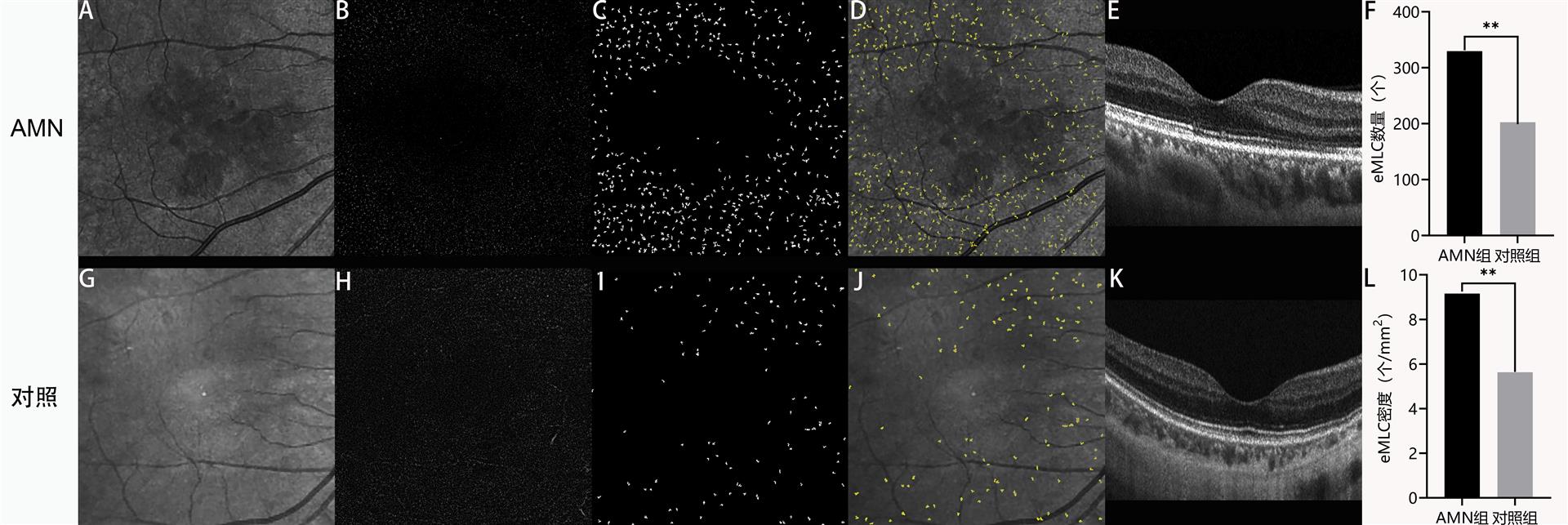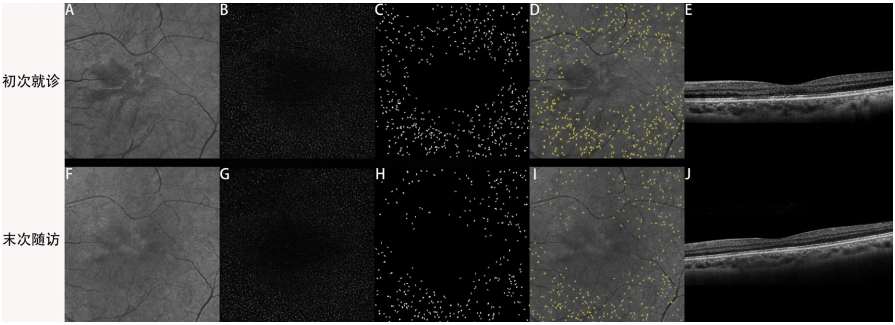1、Bos PJ, Deutman AF. Acute macular neuroretinopathy[J]. Am J Ophthalmol, 1975, 80(4): 573-584. DOI: 10.1016/0002-9394(75)90387-6.Bos PJ, Deutman AF. Acute macular neuroretinopathy[J]. Am J Ophthalmol, 1975, 80(4): 573-584. DOI: 10.1016/0002-9394(75)90387-6.
2、Feng H, Zhao M, Mo J, et al. The characteristics of acute macular neuroretinopathy following COVID-19 infection[J]. BMC Ophthalmol, 2024, 24(1): 19. DOI: 10.1186/s12886-024-03283-2. Feng H, Zhao M, Mo J, et al. The characteristics of acute macular neuroretinopathy following COVID-19 infection[J]. BMC Ophthalmol, 2024, 24(1): 19. DOI: 10.1186/s12886-024-03283-2.
3、Song X, Yu Y, Zhou H, et al. Acute macular neuroretinopathy associated with COVID-19 pandemic: a real-world observation study[J]. Asia Pac J Ophthalmol, 2024, 13(5): 100103. DOI: 10.1016/j.apjo.2024.100103.Song X, Yu Y, Zhou H, et al. Acute macular neuroretinopathy associated with COVID-19 pandemic: a real-world observation study[J]. Asia Pac J Ophthalmol, 2024, 13(5): 100103. DOI: 10.1016/j.apjo.2024.100103.
4、Munk MR, Jampol LM, Cunha Souza E, et al. New associations of classic acute macular neuroretinopathy[J]. Br J Ophthalmol, 2016, 100(3): 389-394. DOI: 10.1136/bjophthalmol-2015-306845. Munk MR, Jampol LM, Cunha Souza E, et al. New associations of classic acute macular neuroretinopathy[J]. Br J Ophthalmol, 2016, 100(3): 389-394. DOI: 10.1136/bjophthalmol-2015-306845.
5、Ashfaq I, Vrahimi M, Waugh S, et al. Acute macular neuroretinopathy associated with acute influenza virus infection[J]. Ocul Immunol Inflamm, 2021, 29(2): 333-339. DOI: 10.1080/09273948.2019.1681470.Ashfaq I, Vrahimi M, Waugh S, et al. Acute macular neuroretinopathy associated with acute influenza virus infection[J]. Ocul Immunol Inflamm, 2021, 29(2): 333-339. DOI: 10.1080/09273948.2019.1681470.
6、Ikema S, Miura G, Shimizu D, et al. Long-term follow-up of a young male who developed acute macular neuroretinopathy following COVID-19 vaccination[J]. Clin Case Rep, 2023, 11(11): e8181. DOI: 10.1002/ccr3.8181. Ikema S, Miura G, Shimizu D, et al. Long-term follow-up of a young male who developed acute macular neuroretinopathy following COVID-19 vaccination[J]. Clin Case Rep, 2023, 11(11): e8181. DOI: 10.1002/ccr3.8181.
7、Azar%20G%2C%20Bonnin%20S%2C%20Vasseur%20V%2C%20et%20al.%20Did%20the%20COVID-19%20pandemic%20increase%20the%20incidence%20of%20acute%20macular%20neuroretinopathy%3F%5BJ%5D.%20J%20Clin%20Med%2C%202021%2C%2010(21)%3A%205038.%20DOI%3A%2010.3390%2Fjcm10215038.Azar%20G%2C%20Bonnin%20S%2C%20Vasseur%20V%2C%20et%20al.%20Did%20the%20COVID-19%20pandemic%20increase%20the%20incidence%20of%20acute%20macular%20neuroretinopathy%3F%5BJ%5D.%20J%20Clin%20Med%2C%202021%2C%2010(21)%3A%205038.%20DOI%3A%2010.3390%2Fjcm10215038.
8、Bhavsar KV, Lin S, Rahimy E, et al. Acute macular neuroretinopathy: a comprehensive review of the literature[J]. Surv Ophthalmol, 2016, 61(5): 538-565. DOI: 10.1016/j.survophthal.2016.03.003.Bhavsar KV, Lin S, Rahimy E, et al. Acute macular neuroretinopathy: a comprehensive review of the literature[J]. Surv Ophthalmol, 2016, 61(5): 538-565. DOI: 10.1016/j.survophthal.2016.03.003.
9、 Casalino G, Arrigo A, Romano F, et al. Acute macular neuroretinopathy: pathogenetic insights from optical coherence tomography angiography[J]. Br J Ophthalmol, 2019, 103(3): 410-414. DOI: 10.1136/bjophthalmol-2018-312197. Casalino G, Arrigo A, Romano F, et al. Acute macular neuroretinopathy: pathogenetic insights from optical coherence tomography angiography[J]. Br J Ophthalmol, 2019, 103(3): 410-414. DOI: 10.1136/bjophthalmol-2018-312197.
10、 Hammer DX, Agrawal A, Villanueva R, et al. Label-free adaptive optics imaging of human retinal macrophage distribution and dynamics[J]. Proc Natl Acad Sci USA, 2020, 117(48): 30661-30669. DOI: 10.1073/pnas.2010943117. Hammer DX, Agrawal A, Villanueva R, et al. Label-free adaptive optics imaging of human retinal macrophage distribution and dynamics[J]. Proc Natl Acad Sci USA, 2020, 117(48): 30661-30669. DOI: 10.1073/pnas.2010943117.
11、Zeng Y, Wen F, Mi L, et al. Changes in macrophage-like cells characterized by en face optical coherence tomography after retinal stroke[J]. Front Immunol, 2022, 13: 987836. DOI: 10.3389/fimmu.2022.987836.Zeng Y, Wen F, Mi L, et al. Changes in macrophage-like cells characterized by en face optical coherence tomography after retinal stroke[J]. Front Immunol, 2022, 13: 987836. DOI: 10.3389/fimmu.2022.987836.
12、Zeng Y, Zhang X, Mi L, et al. Characterization of macrophage-like cells in retinal vein occlusion using en face optical coherence tomography[J]. Front Immunol, 2022, 13: 855466. DOI: 10.3389/fimmu.2022.855466. Zeng Y, Zhang X, Mi L, et al. Characterization of macrophage-like cells in retinal vein occlusion using en face optical coherence tomography[J]. Front Immunol, 2022, 13: 855466. DOI: 10.3389/fimmu.2022.855466.
13、 Zeng Y, Wen F, Zhuang X, et al. Epiretinal macrophage-like cells on optical coherence tomography: Potential Inflammatory Imaging Biomarker of Severity in Diabetic Retinopathy[J]. Retina, 2024, 44(8): 1314-1322. DOI: 10.1097/iae.0000000000004100. Zeng Y, Wen F, Zhuang X, et al. Epiretinal macrophage-like cells on optical coherence tomography: Potential Inflammatory Imaging Biomarker of Severity in Diabetic Retinopathy[J]. Retina, 2024, 44(8): 1314-1322. DOI: 10.1097/iae.0000000000004100.
14、Zeng%20Y%2C%20Zhang%20X%2C%20Mi%20L%2C%20et%20al.%20Macrophage-like%20cells%20characterized%20by%20en%20face%20optical%20coherence%20tomography%20was%20associated%20with%20fluorescein%20vascular%20leakage%20in%20beh%C3%A7et%E2%80%99s%20uveitis%5BJ%5D.%20Ocul%20Immunol%20Inflamm%2C%202023%2C%2031(5)%3A%20999-1005.%20DOI%3A%2010.1080%2F09273948.2022.2080719.Zeng%20Y%2C%20Zhang%20X%2C%20Mi%20L%2C%20et%20al.%20Macrophage-like%20cells%20characterized%20by%20en%20face%20optical%20coherence%20tomography%20was%20associated%20with%20fluorescein%20vascular%20leakage%20in%20beh%C3%A7et%E2%80%99s%20uveitis%5BJ%5D.%20Ocul%20Immunol%20Inflamm%2C%202023%2C%2031(5)%3A%20999-1005.%20DOI%3A%2010.1080%2F09273948.2022.2080719.
15、Li M, Zhang X, Ji Y, Ye B, Wen F. Acute Macular Neuroretinopathy in Dengue Fever: Short-term Prospectively Followed Up Case Series. JAMA Ophthalmol. 2015 Nov;133(11):1329-33. doi: 10.1001/jamaophthalmol.2015.2687.Li M, Zhang X, Ji Y, Ye B, Wen F. Acute Macular Neuroretinopathy in Dengue Fever: Short-term Prospectively Followed Up Case Series. JAMA Ophthalmol. 2015 Nov;133(11):1329-33. doi: 10.1001/jamaophthalmol.2015.2687.
16、Castanos MV, Zhou DB, Linderman RE, et al. Imaging of macrophage-like cells in living human retina using clinical OCT[J]. Invest Ophthalmol Vis Sci, 2020, 61(6): 48. DOI: 10.1167/iovs.61.6.48. Castanos MV, Zhou DB, Linderman RE, et al. Imaging of macrophage-like cells in living human retina using clinical OCT[J]. Invest Ophthalmol Vis Sci, 2020, 61(6): 48. DOI: 10.1167/iovs.61.6.48.
17、Ong JX, Nesper PL, Fawzi AA, et al. Macrophage-like cell density is increased in proliferative diabetic retinopathy characterized by optical coherence tomography angiography[J]. Invest Ophthalmol Vis Sci, 2021, 62(10): 2. DOI: 10.1167/iovs.62.10.2. Ong JX, Nesper PL, Fawzi AA, et al. Macrophage-like cell density is increased in proliferative diabetic retinopathy characterized by optical coherence tomography angiography[J]. Invest Ophthalmol Vis Sci, 2021, 62(10): 2. DOI: 10.1167/iovs.62.10.2.
18、Schindelin J, Arganda-Carreras I, Frise E, et al. Fiji: an open-source platform for biological-image analysis. Nat Methods, 2012, 9(7): 676-682. DOI: 10.1038/nmeth.2019.Schindelin J, Arganda-Carreras I, Frise E, et al. Fiji: an open-source platform for biological-image analysis. Nat Methods, 2012, 9(7): 676-682. DOI: 10.1038/nmeth.2019.
19、 Iovino C, Au A, Ramtohul P, et al. Coincident PAMM and AMN and insights into a common pathophysiology[J]. Am J Ophthalmol, 2022, 236: 136-146. DOI: 10.1016/j.ajo.2021.07.004. Iovino C, Au A, Ramtohul P, et al. Coincident PAMM and AMN and insights into a common pathophysiology[J]. Am J Ophthalmol, 2022, 236: 136-146. DOI: 10.1016/j.ajo.2021.07.004.
20、Bellot L, Laurent C, Arcade PE, et al. Acute macular neuroretinopathy: En face OCT description, case series[J]. J Fr Ophtalmol, 2022, 45(2): 159-165. DOI: 10.1016/j.jfo.2021.09.013.Bellot L, Laurent C, Arcade PE, et al. Acute macular neuroretinopathy: En face OCT description, case series[J]. J Fr Ophtalmol, 2022, 45(2): 159-165. DOI: 10.1016/j.jfo.2021.09.013.
21、Fawzi AA, Pappuru RR, Sarraf D, et al. Acute macular neuroretinopathy: long-term insights revealed by multimodal imaging[J]. Retina, 2012, 32(8): 1500-1513. DOI: 10.1097/iae.0b013e318263d0c3.Fawzi AA, Pappuru RR, Sarraf D, et al. Acute macular neuroretinopathy: long-term insights revealed by multimodal imaging[J]. Retina, 2012, 32(8): 1500-1513. DOI: 10.1097/iae.0b013e318263d0c3.
22、Giacuzzo C, Eandi CM, Kawasaki A. Bilateral acute macular neuroretinopathy following COVID-19 infection[J]. Acta Ophthalmol, 2022, 100(2): e611-e612. DOI: 10.1111/aos.14913. Giacuzzo C, Eandi CM, Kawasaki A. Bilateral acute macular neuroretinopathy following COVID-19 infection[J]. Acta Ophthalmol, 2022, 100(2): e611-e612. DOI: 10.1111/aos.14913.
23、Capuano V, Forte P, Sacconi R, et al. Acute macular neuroretinopathy as the first stage of SARS-CoV-2 infection[J]. Eur J Ophthalmol, 2023, 33(3): NP105-NP111. DOI: 10.1177/11206721221090697. Capuano V, Forte P, Sacconi R, et al. Acute macular neuroretinopathy as the first stage of SARS-CoV-2 infection[J]. Eur J Ophthalmol, 2023, 33(3): NP105-NP111. DOI: 10.1177/11206721221090697.
24、Lee SY, Cheng JL, Gehrs KM, et al. Choroidal features of acute macular neuroretinopathy via optical coherence tomography angiography and correlation with serial multimodal imaging[J]. JAMA Ophthalmol, 2017, 135(11): 1177-1183. DOI: 10.1001/jamaophthalmol.2017.3790. Lee SY, Cheng JL, Gehrs KM, et al. Choroidal features of acute macular neuroretinopathy via optical coherence tomography angiography and correlation with serial multimodal imaging[J]. JAMA Ophthalmol, 2017, 135(11): 1177-1183. DOI: 10.1001/jamaophthalmol.2017.3790.
25、von der Burchard C, Gruben A, Roider J. Optical coherence tomography angiography suggests choriocapillaris perfusion deficit as etiology of acute macular neuroretinopathy[J]. Graefe’s Arch Clin Exp Ophthalmol, 2024, 262(8): 2471-2479. DOI: 10.1007/s00417-024-06436-7. von der Burchard C, Gruben A, Roider J. Optical coherence tomography angiography suggests choriocapillaris perfusion deficit as etiology of acute macular neuroretinopathy[J]. Graefe’s Arch Clin Exp Ophthalmol, 2024, 262(8): 2471-2479. DOI: 10.1007/s00417-024-06436-7.
26、Mat Nor MN, Guo CX, Green CR, et al. Hyper-reflective dots in optical coherence tomography imaging and inflammation markers in diabetic retinopathy[J]. J Anat, 2023, 243(4): 697-705. DOI: 10.1111/joa.13889.Mat Nor MN, Guo CX, Green CR, et al. Hyper-reflective dots in optical coherence tomography imaging and inflammation markers in diabetic retinopathy[J]. J Anat, 2023, 243(4): 697-705. DOI: 10.1111/joa.13889.
27、 Rajesh A, Droho S, Lavine JA. Macrophages in close proximity to the vitreoretinal interface are potential biomarkers of inflammation during retinal vascular disease[J]. J Neuroinflammation, 2022, 19(1): 203. DOI: 10.1186/s12974-022-02562-3. Rajesh A, Droho S, Lavine JA. Macrophages in close proximity to the vitreoretinal interface are potential biomarkers of inflammation during retinal vascular disease[J]. J Neuroinflammation, 2022, 19(1): 203. DOI: 10.1186/s12974-022-02562-3.
28、Taghavi Y, Hassanshahi G, Kounis NG, et al. Monocyte chemoattractant protein-1 (MCP-1/CCL2) in diabetic retinopathy: latest evidence and clinical considerations[J]. J Cell Commun Signal, 2019, 13(4): 451-462. DOI: 10.1007/s12079-018-00500-8. Taghavi Y, Hassanshahi G, Kounis NG, et al. Monocyte chemoattractant protein-1 (MCP-1/CCL2) in diabetic retinopathy: latest evidence and clinical considerations[J]. J Cell Commun Signal, 2019, 13(4): 451-462. DOI: 10.1007/s12079-018-00500-8.
29、Pichi F, Neri P, Aljeneibi S, et al. In vivo visualization of macrophage-like cells in patients with uveitis by use of En face swept source optical coherence tomography[J]. Ocul Immunol Inflamm, 2024, 32(8): 1532-1538. DOI: 10.1080/09273948.2023.2254369.Pichi F, Neri P, Aljeneibi S, et al. In vivo visualization of macrophage-like cells in patients with uveitis by use of En face swept source optical coherence tomography[J]. Ocul Immunol Inflamm, 2024, 32(8): 1532-1538. DOI: 10.1080/09273948.2023.2254369.
30、Carre%C3%B1o%20E%2C%20Hernanz%20I%2C%20Collado%20B%2C%20et%20al.%20Description%20of%20macrophage-like%20cells%20in%20active%20ocular%20toxoplasmosis%5BJ%5D.%20Ocul%20Immunol%20Inflamm%2C%202024%2C%2032(8)%3A%201893-1896.%20DOI%3A%2010.1080%2F09273948.2023.2263073.%20Carre%C3%B1o%20E%2C%20Hernanz%20I%2C%20Collado%20B%2C%20et%20al.%20Description%20of%20macrophage-like%20cells%20in%20active%20ocular%20toxoplasmosis%5BJ%5D.%20Ocul%20Immunol%20Inflamm%2C%202024%2C%2032(8)%3A%201893-1896.%20DOI%3A%2010.1080%2F09273948.2023.2263073.%20






